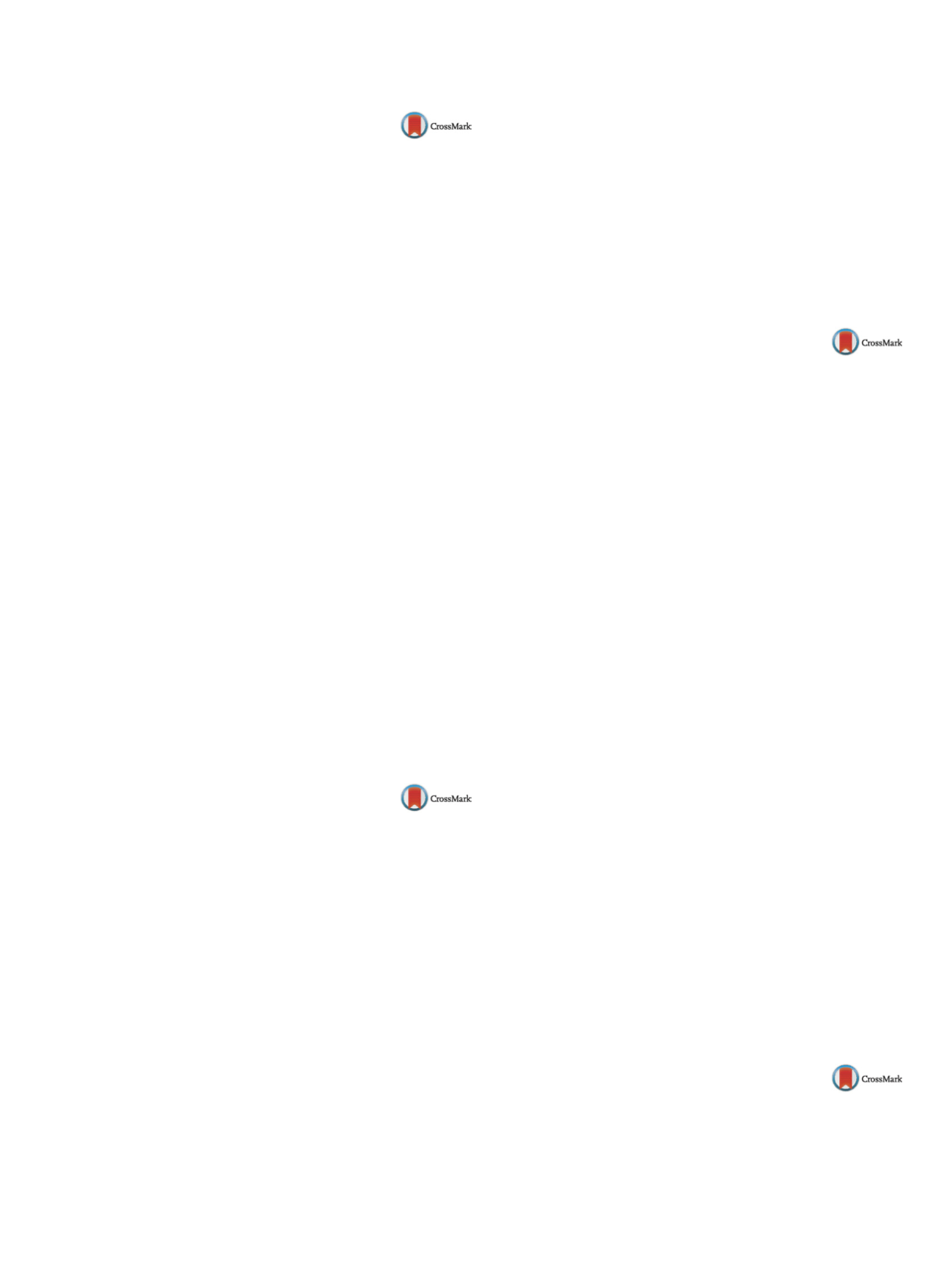

25th European Congress of Psychiatry / European Psychiatry 41S (2017) S170–S237
S191
EW0250
Efficacy and safety of MIN-101: A new
drug for the treatment of negative
symptoms in schizophrenia a 12-week
randomized, double blind,
placebo-controlled trial
R. Luthringer
Minerva, Neuroscience, Colamr, USA
Objective
To compare the efficacy, safety, and tolerability of MIN-
101, a compound with high affinities for sigma 2 and 5-HT
2A
receptors, to placebo in treating negative symptoms, in stabilized
patients with schizophrenia.
Methods
This multi-national phase 2b trial enrolled 244
patients with schizophrenia who were symptomatically stable
for
≥
3months prior to entering the trial and had scores
≥
20
negative subscale of the PANSS. Patients were randomized to
monotherapy with MIN-101 32mg/day, MIN-101 64mg/day or
placebo in a 1:1:1 ratio. The primary endpoint was the PANSS neg-
ative symptom score based on the five factors (pentagonal) model.
Results
Statistically significant reduction in the primary endpoint
scorewas demonstrated forMIN-101 32mg and 64mg compared to
placebo (
P
≤
0.022, ES 0.45 and
≤
0.003, ES 0.58, respectively). This
was supported by similar effects on most of the secondary mea-
surements including: the PANSS three factors negative symptoms
subscale, PANSS total score, CGI, BACS, CDSS, and PSP. There were
no statistically significant differences in PANSS positive subscale
scores between MIN-101 and placebo. No weight gain or clinically
significant changes in vital sings, prolactin levels, routine labora-
tory values, metabolic indices and extrapyramidal symptom scores
(EPS) were observed.
Conclusions
Since positive symptoms and EPS did not change,
the improvement in negative symptoms was not secondary to
improvement in positive symptoms or EPS, suggesting that MIN-
101 might be the first specific treatment to have a direct effect on
negative symptoms.
Disclosure of interest
I have received consultant fees from
Minerva Neuroscience the sponsor of this trial and own stock of
Minerva Neuroscience
http://dx.doi.org/10.1016/j.eurpsy.2017.01.2120EW0251
The importance of family in the
long-term evolution of psychoses
L. Dehelean
∗
, C. Cornoiu , A.M. Romosan , R.S. Romosan , I. Papava
“Victor Babes” University of Medicine and Pharmacy,
Neuroscience/Psychiatry, Timisoara, Romania
∗
Corresponding author.
Introduction
Adherence and tolerance to treatment are impor-
tant factors, which may predict the long-term evolution of a
psychosis. Familymembersmay influence prognosis bymodulating
emotional expressivity and treatment supervision.
Objectives
To assess the role of family members in the long-term
evolution of psychoses.
Method
The present study is retrospective, conducted on
patients with psychosis. Data were obtained from psychiatric
records extending for a period of four years. The following param-
eters were analyzed: socio-demographic data, family relationships
(parents, spouses) and clinical/evolutive data (onset age for psy-
chosis, number of recurrences).
Results
We analyzed 71 patients, 42 (59.2%) women and 29
(40.8%) men with a mean age of 30.38 years (SD = 9.33). The sub-
jects were diagnosed according to ICD 10 criteria with acute and
transient psychotic disorder (50 patients, 70.4%), schizophrenia (13
patients, 18.3%), and schizoaffective disorder (8 patients, 11.3%).
Patients who reported conflicts between parents had significantly
more recurrences (
t
= –2.1,
P
= 0.04), while those who reported
satisfactory relationships in their family of origin had fewer recurr-
ences (
t
= 2.58,
P
= 0.01) and a later onset age (
t
= –2.89,
P
= 0.006).
Unmarried/single subjects had the psychosis onset at a significantly
earlier age (
t
= 4.72,
P
= 0.0001). In addition, these patients hadmore
conflicts between parents (
Z
= –2.02,
P
= 0.04) in comparison with
married ones.
Conclusions
Conflicts in the family of origin may predispose to a
greater number of recurrences and to an earlier disorder onset. The
presence of a spouse may represent a protective factor.
Disclosure of interest
The authors have not supplied their decla-
ration of competing interest.
http://dx.doi.org/10.1016/j.eurpsy.2017.01.2121EW0252
Classification of first-episode
schizophrenia spectrum disorders and
controls from whole brain white
matter fractional anisotropy using
machine learning
P. Mikolas
1 ,∗
, J. Hlinka
2, Z. Pitra
2, A. Skoch
2, T. Frodl
1,
F. Spaniel
2, T. Hajek
31
Otto-von-Guericke University Magdeburg, Department of
Psychiatry and Psychotherapy, Magdeburg, Germany
2
National Institute of Mental Health, 3rd Faculty of Medicine,
Charles University, Prague, Czech Republic
3
Dalhousie University, Department of Psychiatry, Halifax, Canada
∗
Corresponding author.
Background
Schizophrenia is a chronic disorder with an early
onset and high disease burden in terms of life disability. Its early
recognition may delay the resulting brain structural/functional
alterations and improve treatment outcomes. Unlike conventional
group-statistics, machine-learning techniques made it possible
to classify patients and controls based on the disease patterns
on an individual level. Diagnostic classification in first-episode
schizophrenia to date was mostly performed on sMRI or fMRI data.
DTI modalities have not gained comparable attention.
Methods
We performed the classification of 77 FES patients
and 77 healthy controls matched by age and sex from fractional
anisotropy data from using linear support-vector machine (SVM).
We further analyzed the effect of medication and symptoms on
the classification performance using standard statistical meas-
ures (
t
-test, linear regression) and machine learning (Kernel–Ridge
regression).
Results
The SVM distinguished between patients and controls
with significant accuracy of 62.34% (
P
= 0.005). There was no asso-
ciation between the classification performance and medication nor
symptoms. Group level statistical analysis yielded brain-wide sig-
nificant differences in FA.
Conclusion
The SVM in combination with brain white-matter
fractional anisotropy might help differentiate FES from HC. The
performance of our classification model was not associated with
symptoms or medications and therefore reflects trait markers in
the early course of the disease.
Disclosure of interest
The authors have not supplied their decla-
ration of competing interest.
http://dx.doi.org/10.1016/j.eurpsy.2017.01.2122EW0253
Research and practice for ultra-high
risk for psychosis: A national survey of
early intervention in psychosis
services in England
H. Stain
1 ,∗
, L. Mawn
2, S. Common
3, M. Pilton
4, T. Andrew
51
Leeds Trinity University, School of Social and Health Sciences,
Horsforth Leeds, United Kingdom


















